 |
We chose a beautiful unmowed park site, under the ruins of the Gold Medal Flour
Mill, icon of "big ag" in the Midwest, and at the edge of the last lock along the
Mississippi River. In mid-June, it was filled with weedy wildflowers -- including some
dandelions.
Over 20,000 people attended Northern Spark this year. The theme of the festival
was "Climate Chaos/Climate Rising." How do you make serious work in a relatively circus-like
atmosphere? How do you make joyful work about such a serious subject?
|
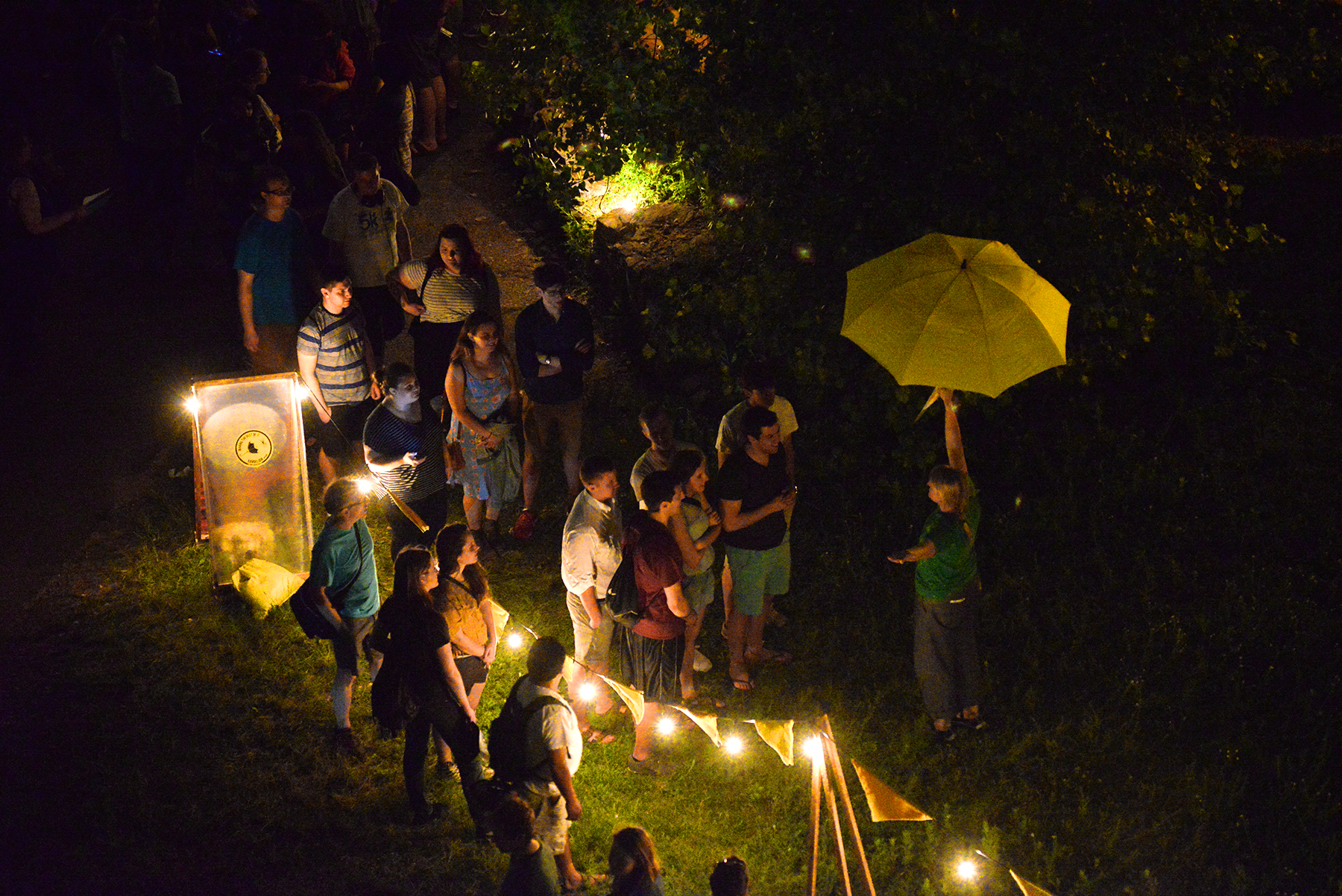 |
In order to create a sense of calm in the maelstrom of events and
installations, and because we wanted to provide a sequenced experience (15-30 minutes) for
participants, we created a loose boundary around the space, allowing for people to observe from
outside or to wait to participate.
|
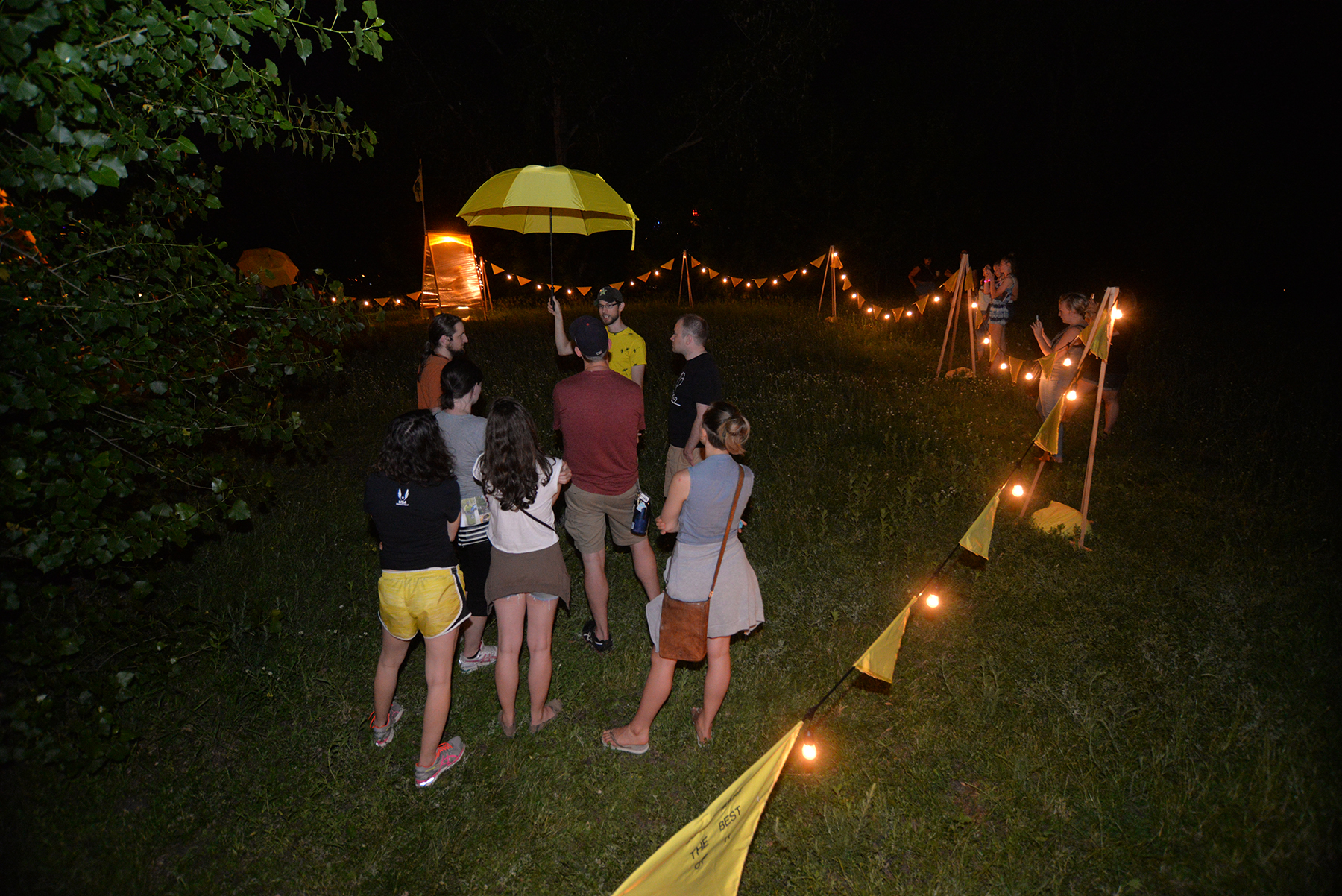 |
Tours of 6-8 people at a time were invited in.
We had up to 4 "guides" working simultaneously.
Guides are identified by their yellow umbrellas.
These were local experts with different backgrounds: biologists, artists, farmers, and food activists.
They were invited to lead in their own way, providing an improvisatory space developed in
rehearsals.
|
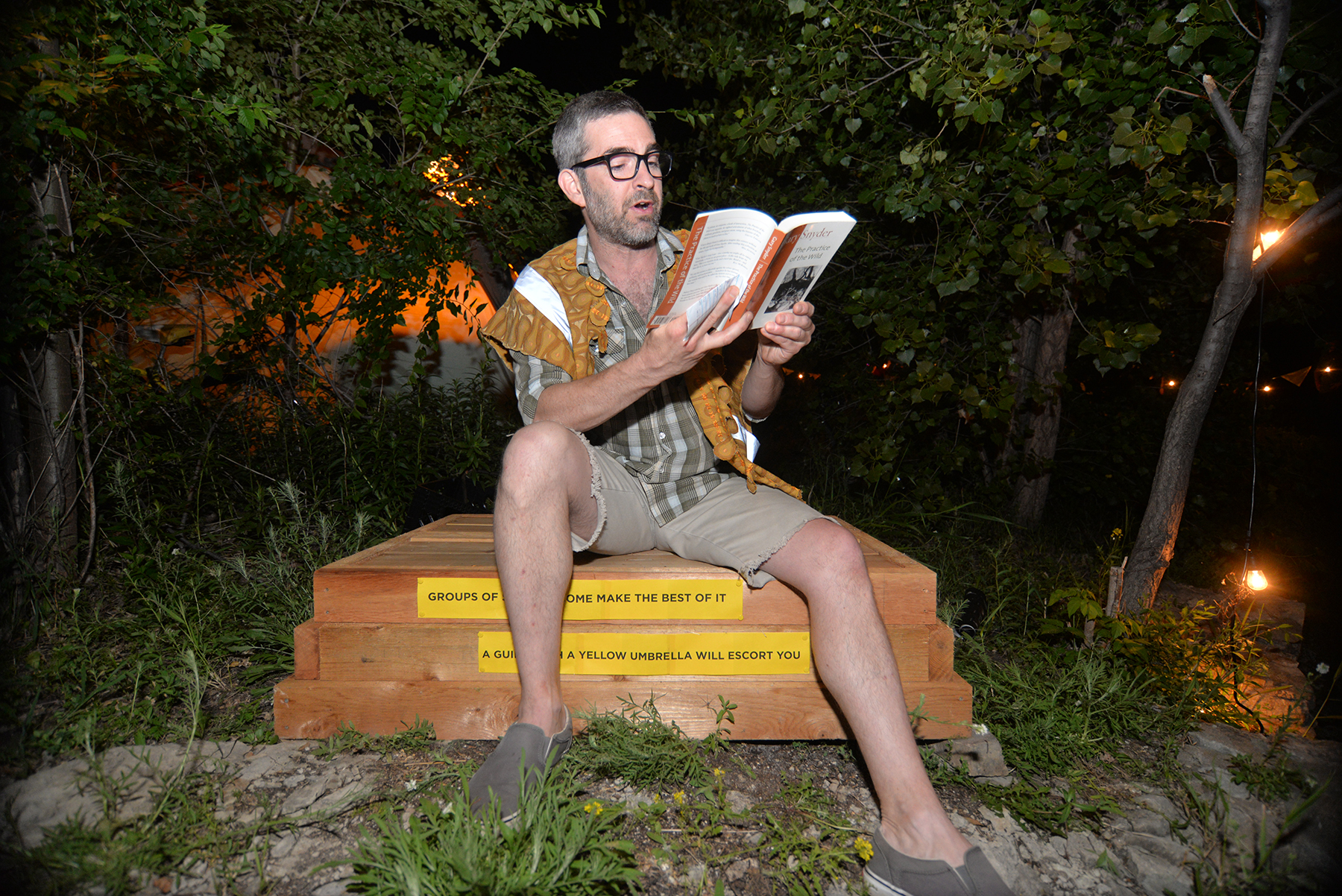 |
While people waited to come in, an Orator read excerpts from a wide range of books and pamphlets, in
the manner of an old-time newspaper hawker. The readings ranged from children's poems about dandelions,
to MN park rules on foraging.
|
 |
The site consisted of three "nodes" or small structures:
-
a Microbiome node (right),
-
a Macrobiome node (top), and
-
a Refuge (left)
Each node had a particular theme, related to dandelions, health and climate
change.
|
 |
The first stop n the tour was the Microbiome node. This node addressed human
being inner ecologies - the beneficial micro-flora (bacteria) that live in our guts.
|
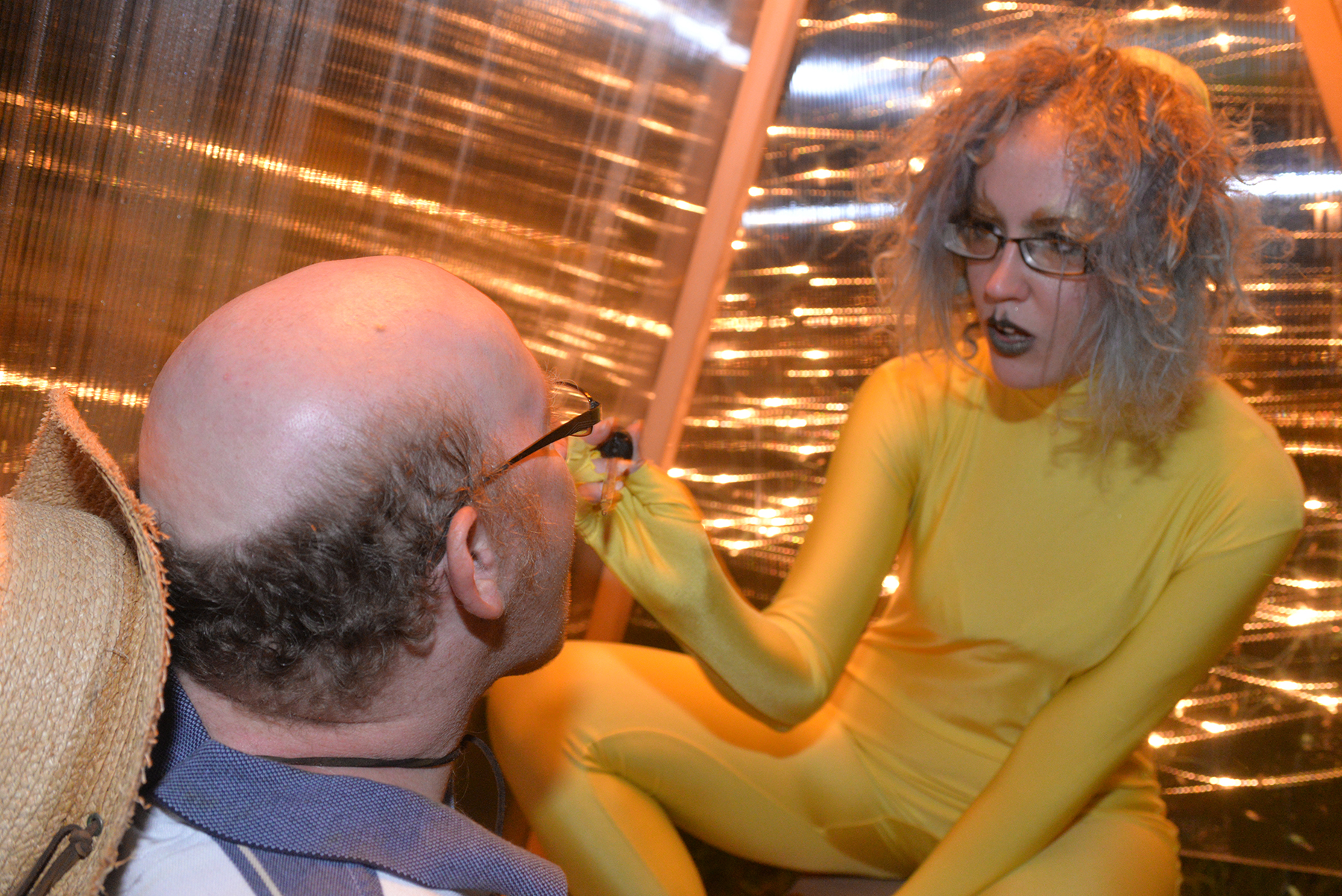 |
In the microbiome, node, a "Gut Fairy" dispenses dandelion root
tincture to feed your inner ecology. Dandelion roots contain high amounts
of inulin, a polysaccharide that feeds these micro-flora. It is often taken in a tincture or a
tea.
|
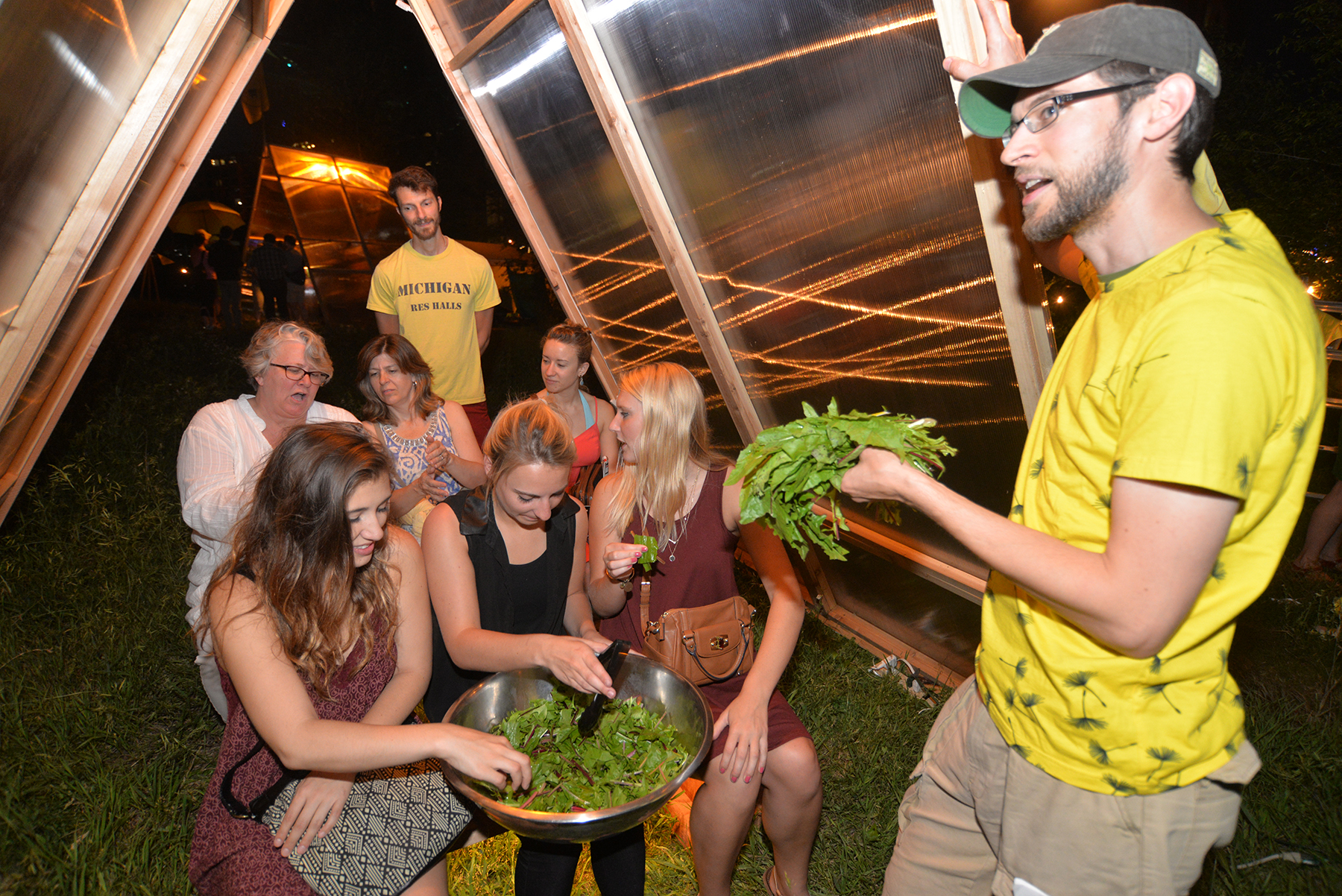 |
The next stop was the Macrobiome node. Participants were invited to sit down and talk
with the guide about the Mississippi River, hydro-power, grain mills, infrastructure, and the limits of
monocultural farm production. Washed raw dandelion leaves were sampled - much as they'd be used in
salads or as cooked greens. They are very bitter. Guides were invited to talk about bitterness and
denial, in the face of climate changes that are altering the growing season, and jeopardizing the food
system we have grown to ignore.
|
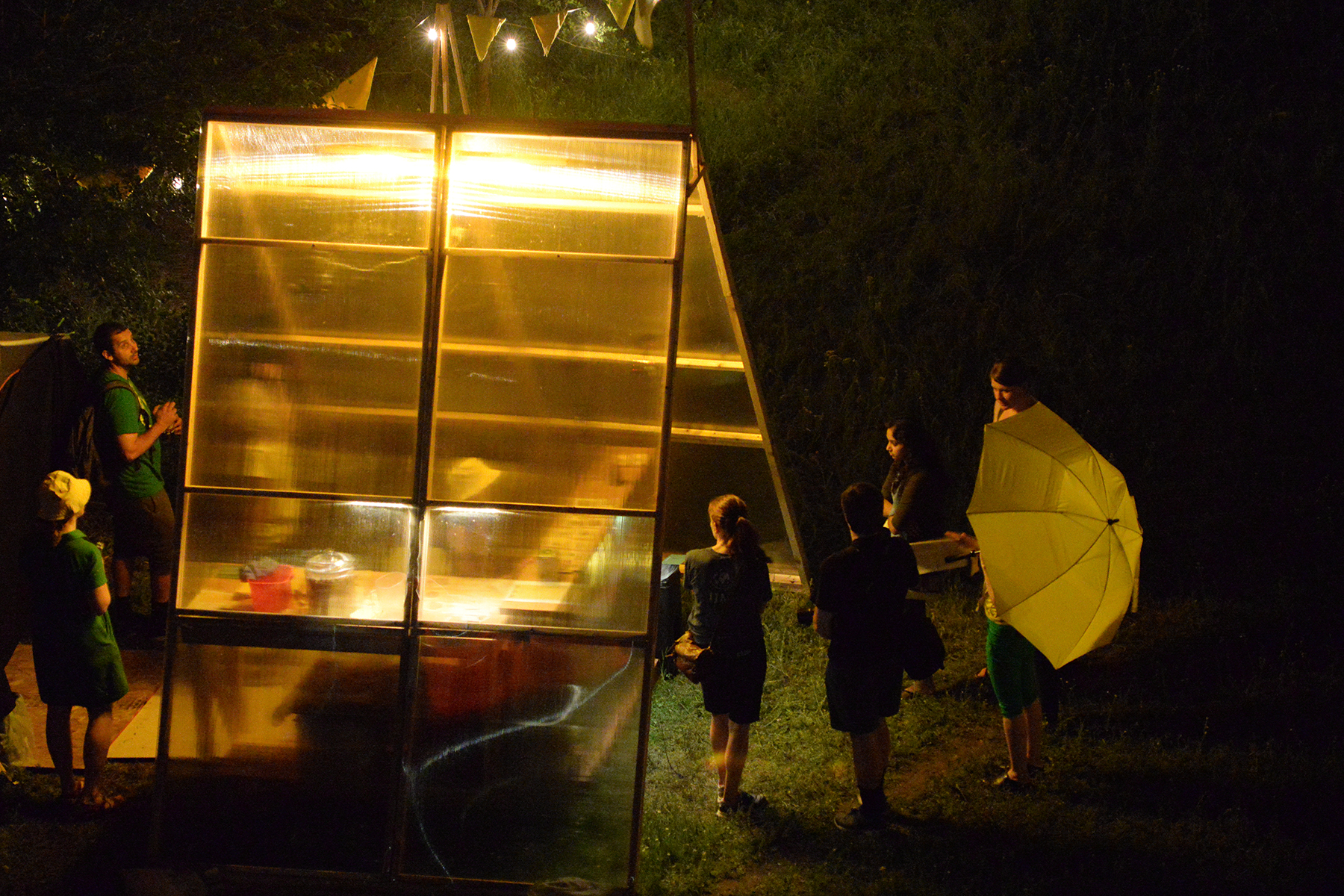 |
The last stop was the Refuge node. This structure functioned as a snack bar,
conversation and interview space.
|
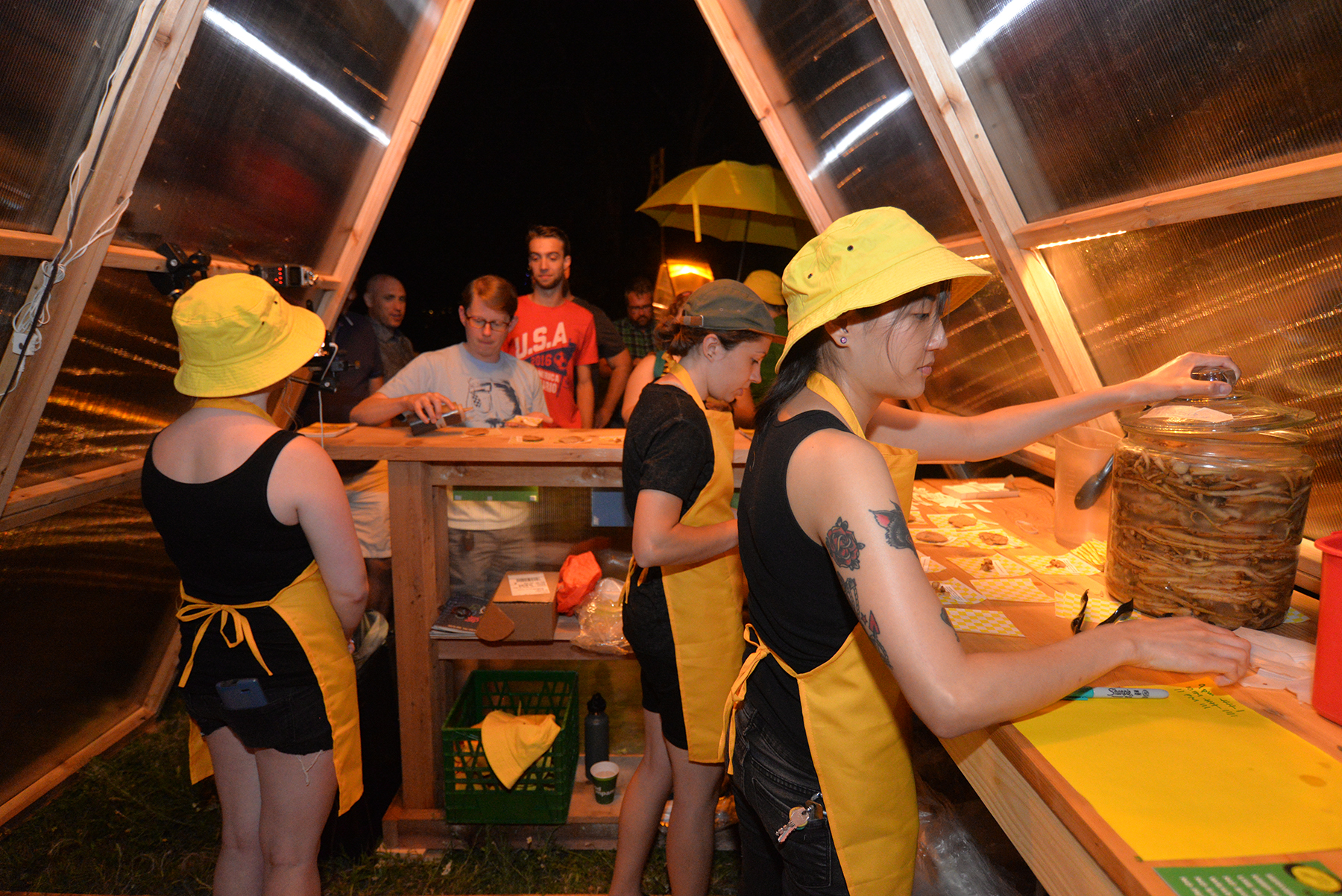 |
In the Refuge node, a dandleion-expert team were in charge of prepping climate change
fortune cookie questions, snacks, and running documentation.
|
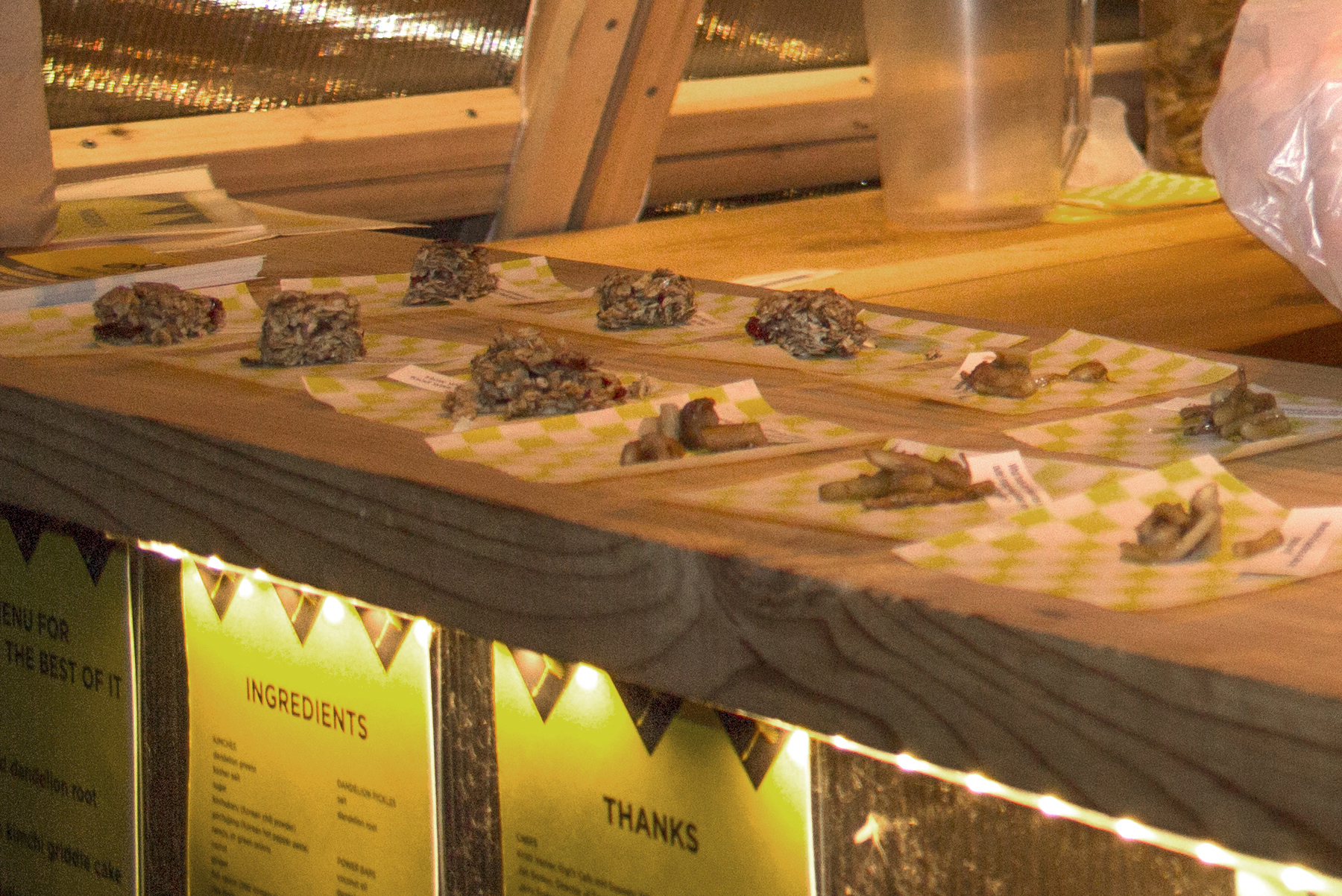 |
We worked with local chefs and fermenters to make dandelion snacks. The dandelions -
flowers, roots and leaves were harvested from neighboring urban farms and gardens by the core group.
Snacks included dandelion flower power bards, dandelion kimchee pancakes, and dandelion
root pickle.
|
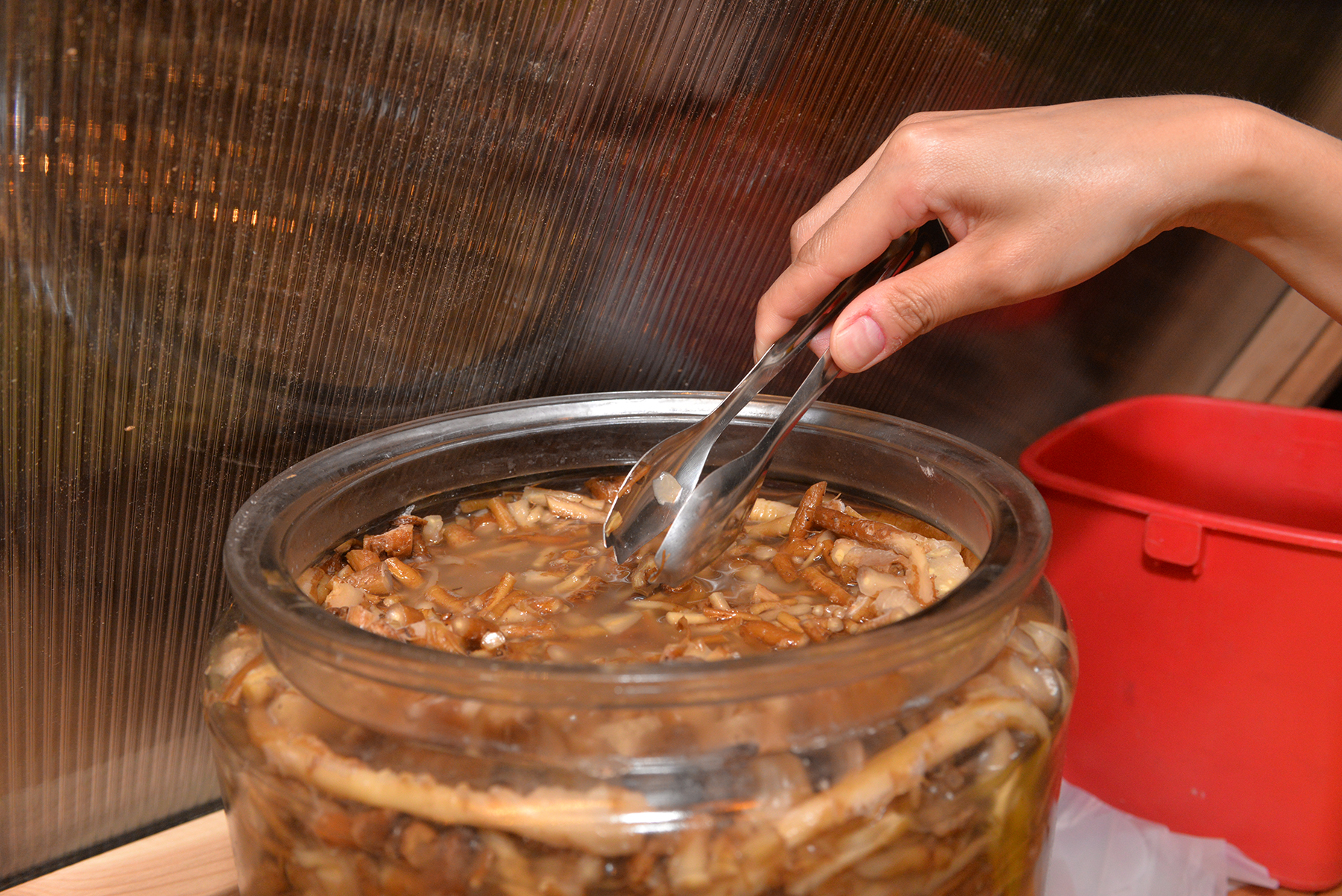 |
Master fermenter Jim Bovino made a large amount of pickles.
|
 |
Each snack came with a question, in the form of a fortune cookie slip.
|
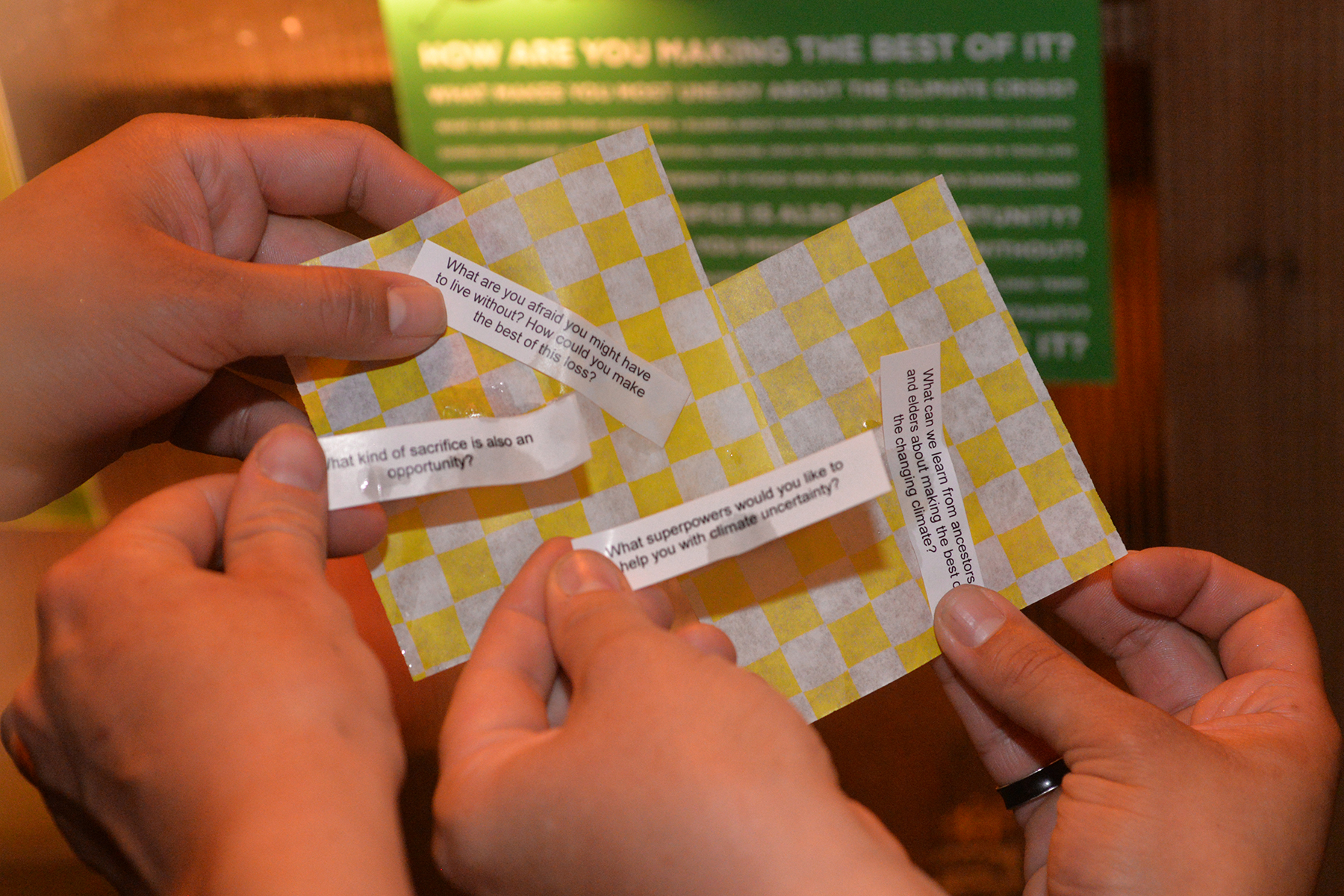 |
There were several "fortune cookie" questions:
How are you making the best of it?
What kind of sacrifice is also an opportunity?
What foods and resources engage and sustain you over the long term?
How would your life be different if food was as available as dandelions?
What superpowers would you like to help you with climate uncertainty?
What are you afraid you might have to live without?
What makes you most uneasy about the climate crisis?
|
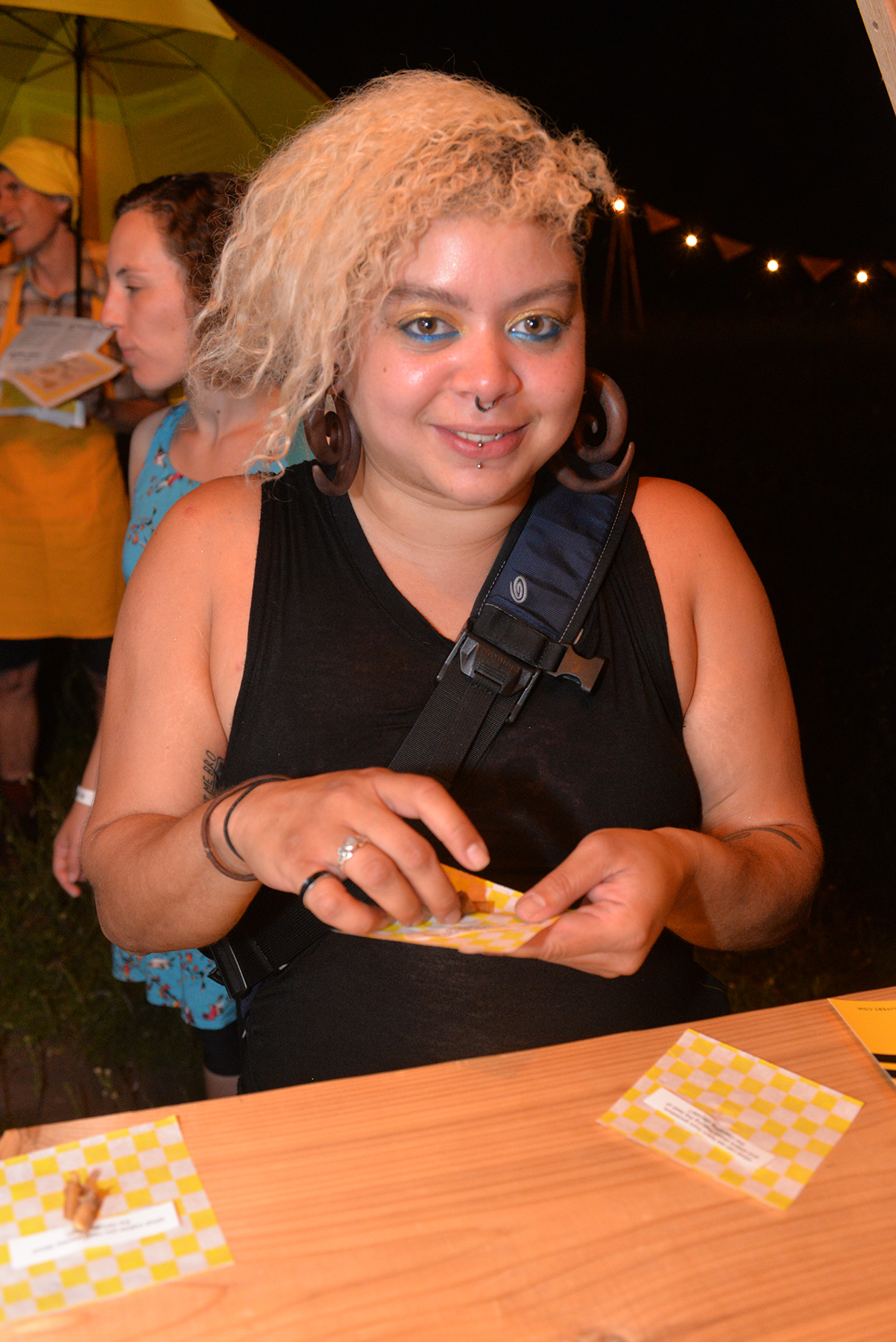 |
Participants volunteered to allow us videotape their thoughts on these questions.
|
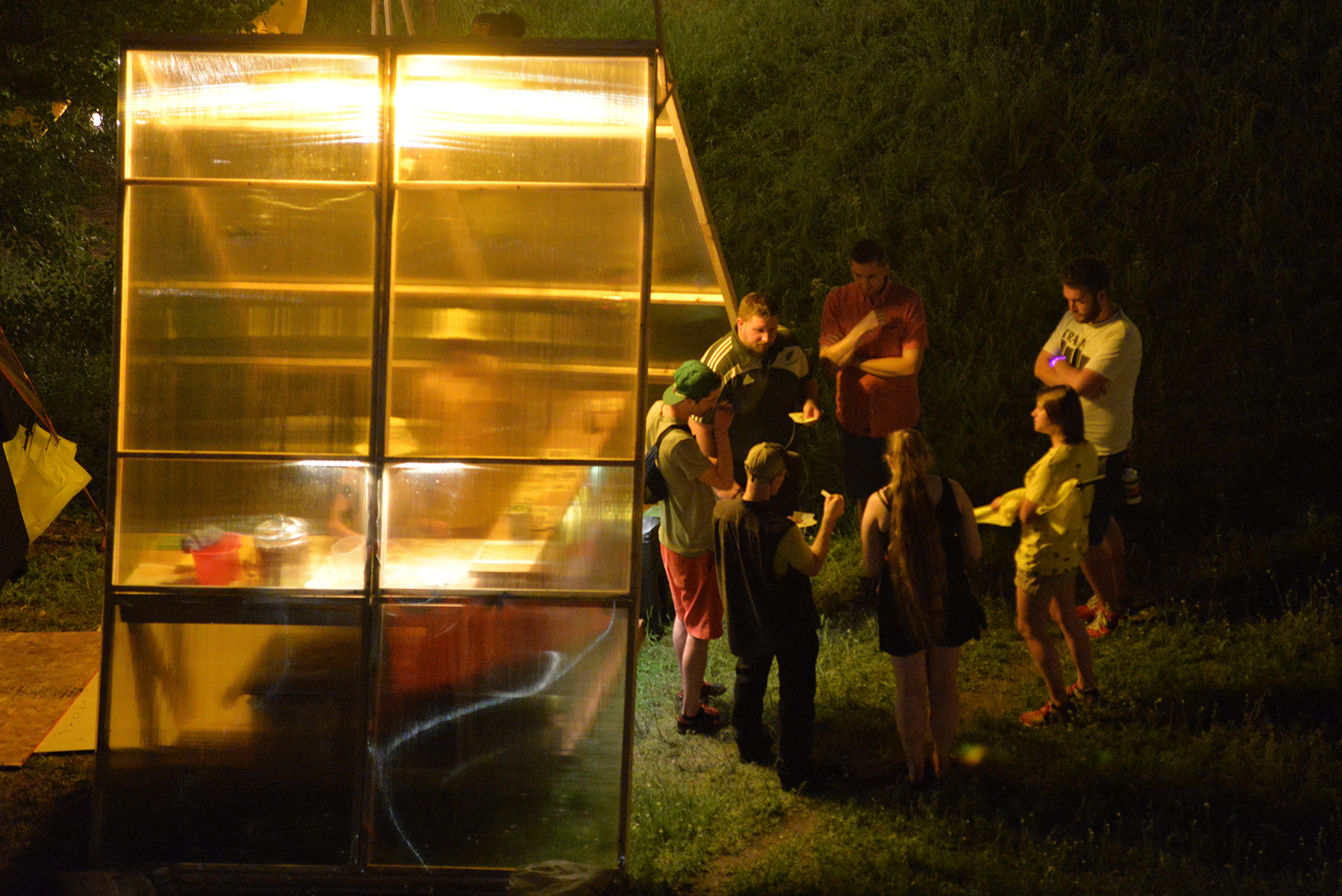 |
Conversations continued after the guided experience was complete.
|
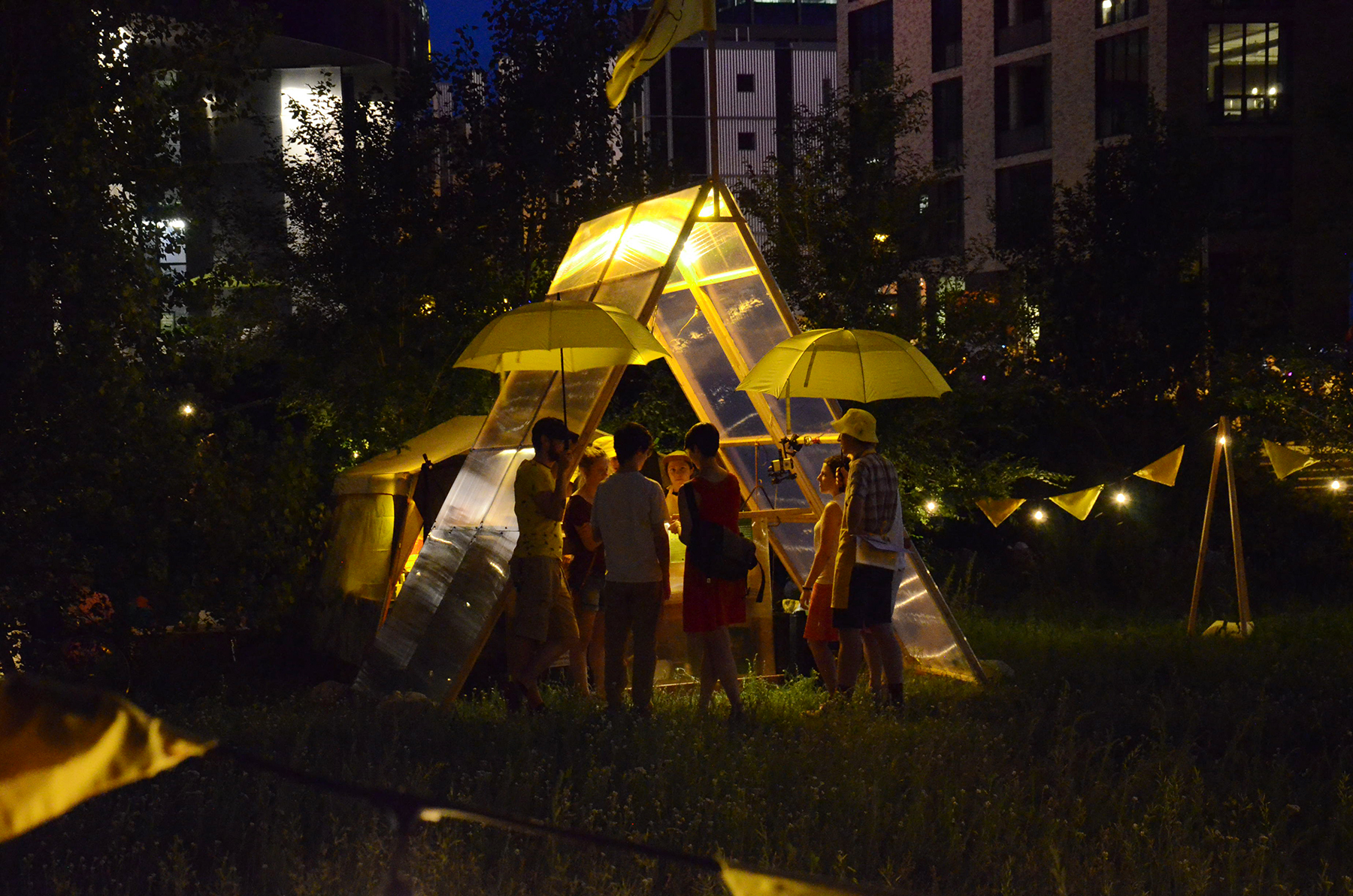 |
The Making the Best of It: Dandelion team: a corps of about 15 guides,
orators, documenters and food servers; they were offered a modest fee for their time. In preparation
for the event, we had several meals, meetings and brief rehearsals. The corps was free to improvise
along a set structure of events, and we asked guides and severs to "hit" some key points,
but were otherwise free to bring their own experiences to the project.
|
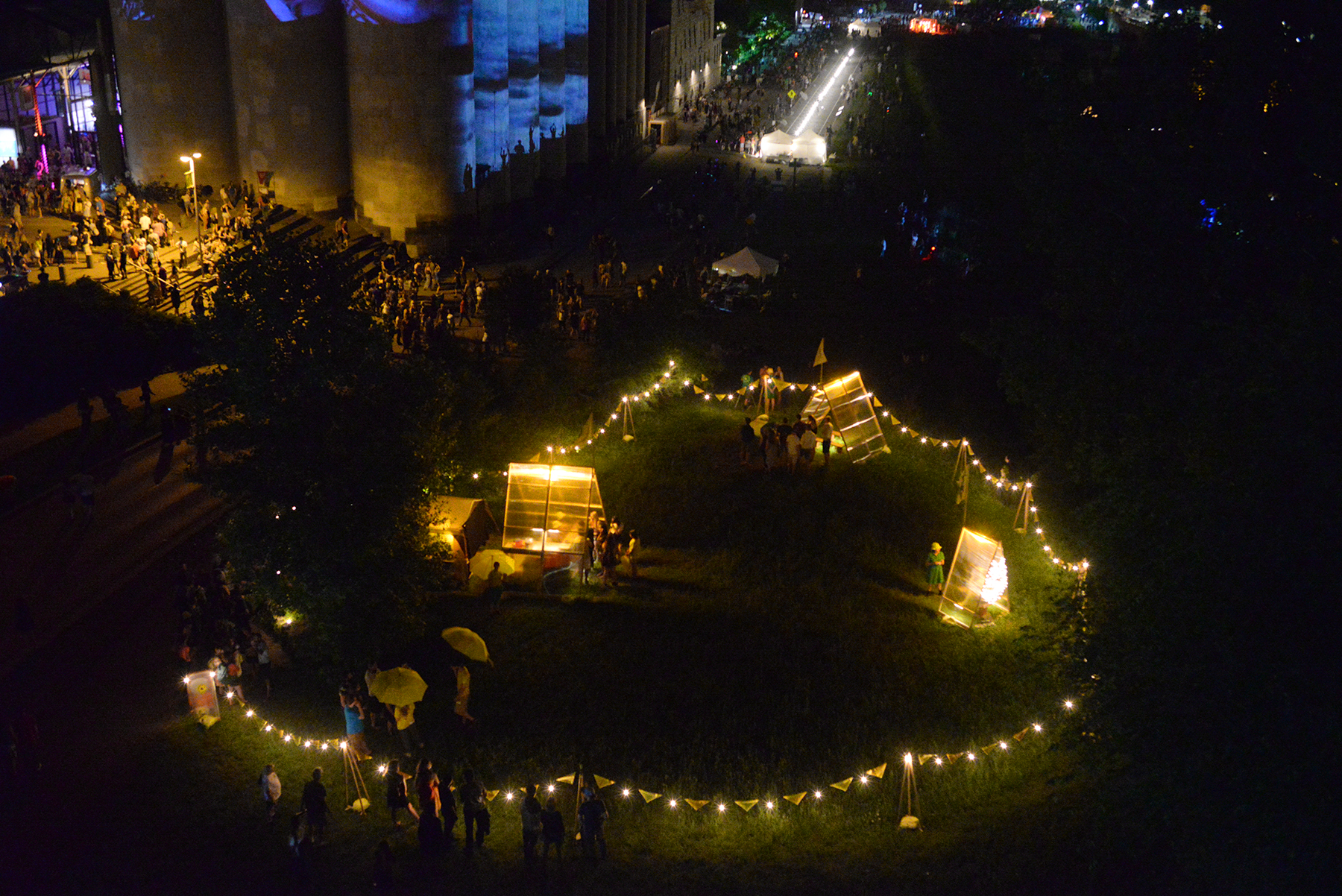 |
Bird's-eye view of our site, in the context of the larger festival along the
Minneapolis side of the Mississippi River
|
 |
Silk flags flew high about each node, representing dandelion relations with humans and
ecologies.
|

